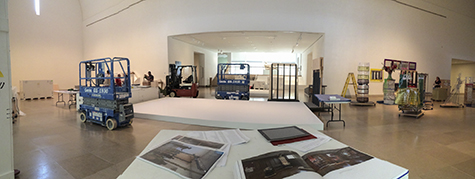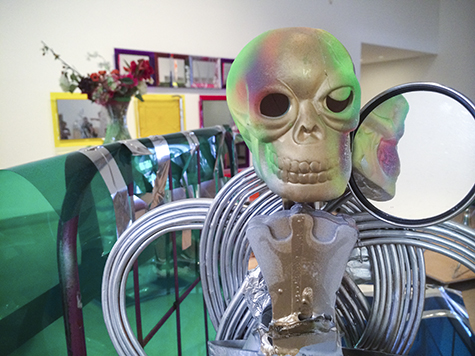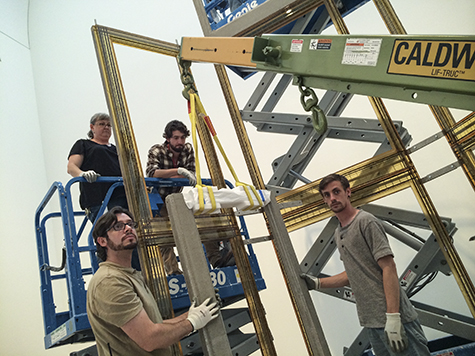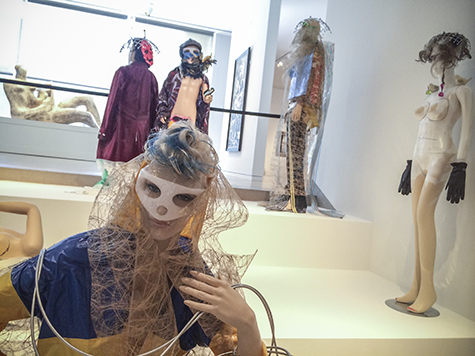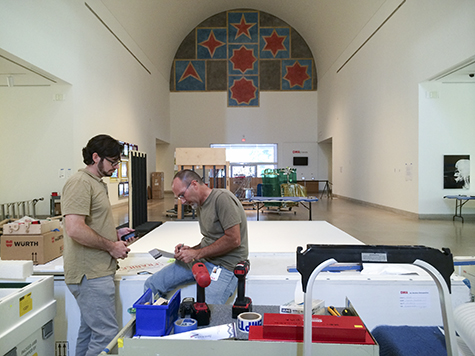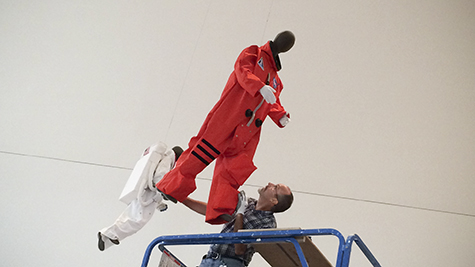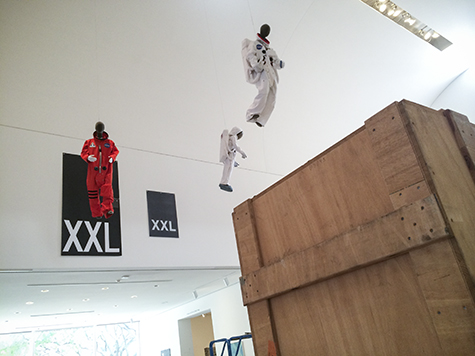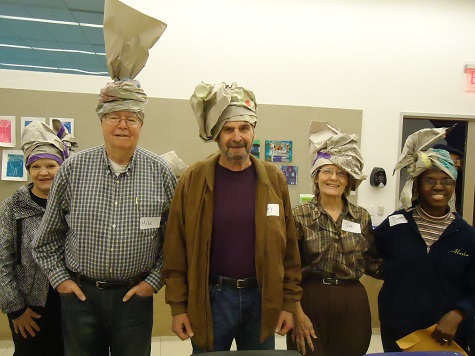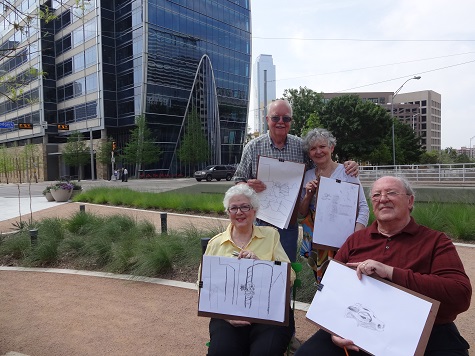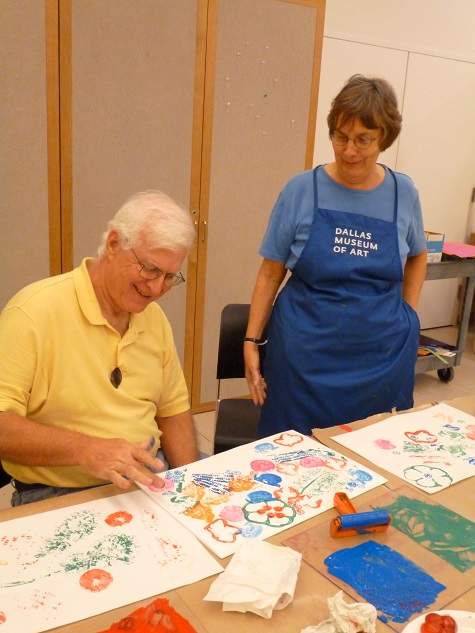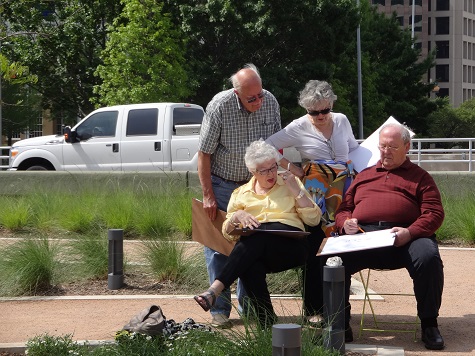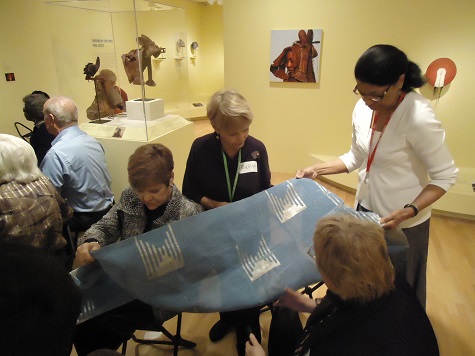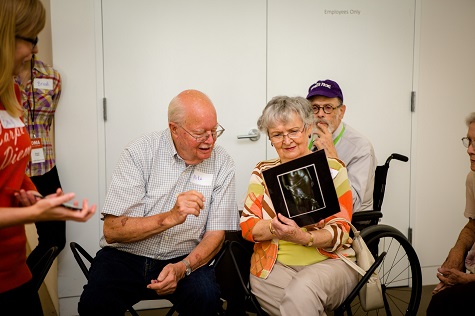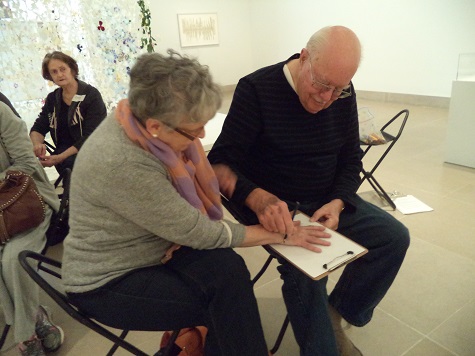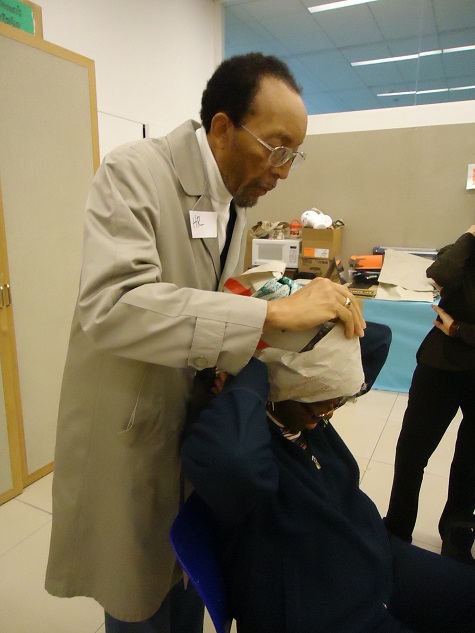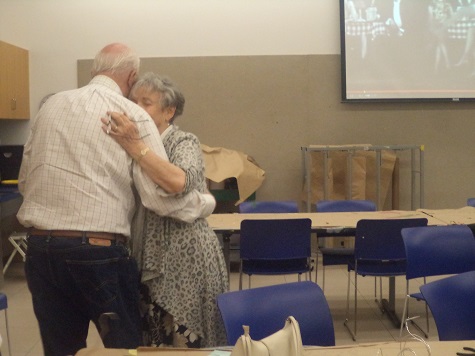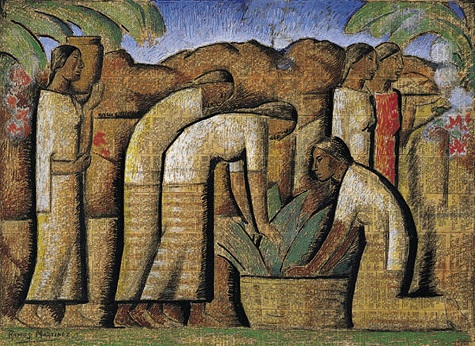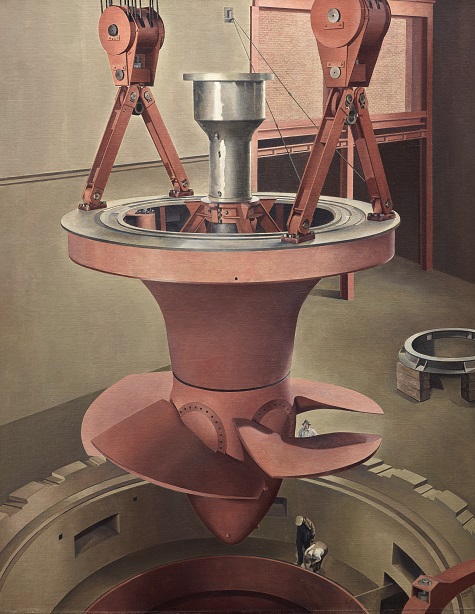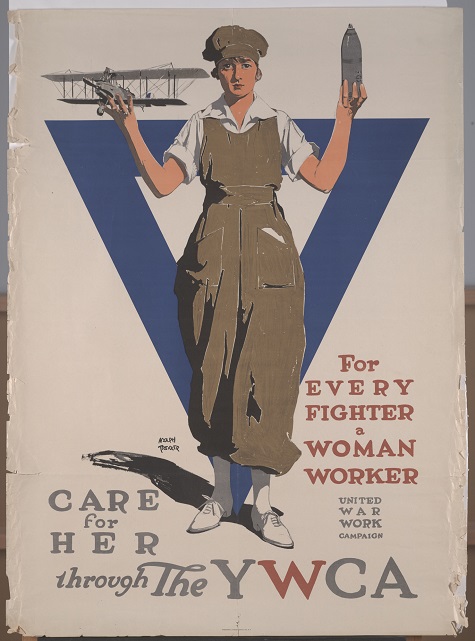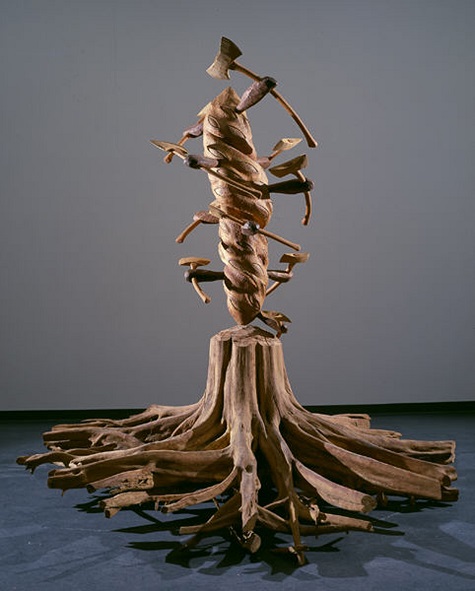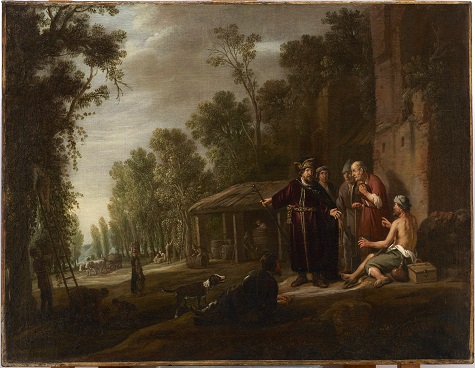We’re kicking off our fall season with our first State of the Arts program, our collaboration with Art&Seek and KERA. Join us Thursday night at 7:00 p.m. for a discussion with three DFW artists: Devon Nowlin, Arthur Peña, and Darryl Ratcliff.

Uncrated was able to ask them a few questions beforehand:
1. What is the most appealing aspect of being a working artist in Dallas?
Devon Nowlin (artist; founding member, Homecoming Committee): As an artist who also works full-time, I have had good employment opportunities in my field and see some good job prospects for artists in both Dallas and Fort Worth. Along with exhibitions, teaching opportunities, and other work-work, one can construct a patchwork of professional activities for one’s self here.
Arthur Peña (artist; founder and Director, WARE:WOLF:HAUS and VICE PALACE): The two very prominent aspects I can think of are pragmatic ones. First, it is extremely affordable to be a working artist in Dallas. It’s not unheard of to have an apartment and a studio for under $600. I don’t know what other major cities can offer that and also boast world-class museums and an established art scene. Second, the accessibility to the Dallas art world is shockingly overlooked. If one wanted, they could meet and shake hands with other artists, gallery directors, collectors, and museum directors at one gathering. And they would be cordial and welcoming. Try that in NYC and see what happens!
Darryl Ratcliff (artist; Community Engagement Associate, National Center for Arts Research & Initiative on Arts+Urbanism): Affordability and opportunity. The access one has to cheap space is truly unique in Dallas, and the general cost of living is far cheaper than in other major cities. Also, there is significant upward mobility in the art scene. There is a willingness to experiment and embrace new ideas and artists.
2. What is something you are thankful for in your art community/peers/scene and how it/they have contributed to your practice?
DN: I am very thankful for the Education Department of the Modern Art Museum of Fort Worth. I have benefited greatly from their programs both as a participant and audience member over the years, and as an artist-instructor in their programs. They give professional, and yet experimental and creative, teaching opportunities to artists in the area, and I have cherished my experiences there. So that is one of the many things in my community that I am very thankful for.
AP: Quick story: The recently retired WARE:WOLF:HAUS operated on limited funds for every show and especially the last fall season. Because of its location, security was needed on top of insurance for liability purposes. Not once did I pay out of pocket for any of that. WWH was able to operate and host shows strictly through donations from my fellow artists and supporters. People would toss whatever they had into the donation bucket, or specific people in the art community donated large funds to keep the door open and allow shows to happen. Considering that WWH was not a nonprofit art space and people were throwing down hard cash, I find this willingness to support the artists and work as a truly collaborative effort inspiring.
DR: It is cliché but I am very thankful for my fellow creatives in this city. My work is collaborative by nature, so I couldn’t have had any success without the constant support and cooperation of literally hundreds of creatives and lovers of creativity over the last five years.
3. How would you improve the Dallas art community/scene ?
DN: In Fort Worth, we are also in need of the facilities and funding that Darryl would like to bring to Dallas. What we don’t have that would really help elevate the local Forth Worth scene is more critical attention in both print and online publications. If artists here could get some press, I think it could help push the dialogue in Fort Worth in ways that I see happening in Dallas. I am encouraged by a level of interaction that is happening among artists between Dallas and Fort Worth, though it tends to be a one-way street with artists going from Fort Worth to Dallas. I’d like to see us mix things up a little more!
AP: Besides the obvious need for an influx of funds either through more grants or private donors, I’m not sure how one could improve the community other than more involvement from the community at large. There needs to be a cultural and psychic shift here in Dallas, and Texas as a whole, when it comes to the arts. Without a steady stream of interest starting at the city’s top level, the city at large will continue to view the arts as pure entrainment rather than as an agent for change and critical thought. We need more artists—not just those who make but those who have the discipline and vision to want to transform this city. I don’t think it’s about improving, rather it should be about energizing, invigorating, and giving everyone a swift kick in the a**.
DR: I would create at least 500 units of subsidized studio/living space for creatives in five geographically diverse parts of Dallas, award at least two million dollars per year in small grant funding to individual artists/projects/collectives, and create an international curator-in-residence program to help top curators become familiar with Dallas-based talent.
Be sure to join us tomorrow night to hear more from these artists.
Liz Menz is the Manager of Adult Programming at the DMA.
